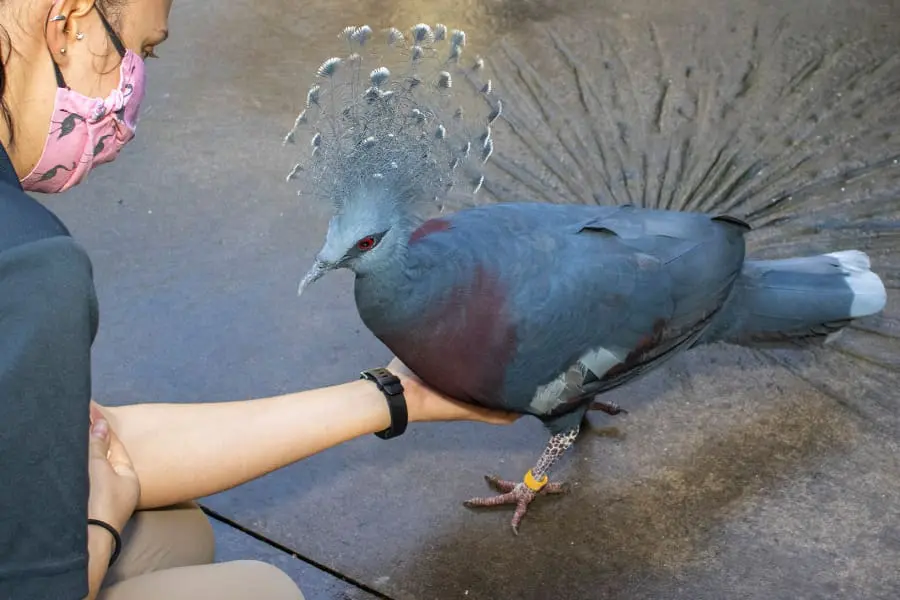

Gagnon feels Pidgeot’s keel.
Sporting electric-blue plumage and unmistakable “hairdos,” it’s clear to see why Victoria crowned pigeons Pidgey and Pidgeot are favorites of Zoo guests and employees alike. But for the first few years after their arrival, they were regarded as two of the timidest birds at the Zoo, bearing little to no interest in approaching people—let alone being touched by keepers.
Thanks in no small part to food rewards, animal care staff slowly but surely gained the pair’s trust and were eventually able to coax them down for monthly weigh-ins.
Inspired by this positive development, keeper Kristen Gagnon began training the pigeons for keel scoring. Because feathers typically don’t conform as tightly to an animal’s skin as fur and scales do, a hands-on examination of the muscles and fat around a bird’s breastbone (also known as a keel) is one of the most effective ways to assess a bird’s body condition outside of a clinical setting. An extremely low or high keel score can be indicative of an underlying health issue that is not otherwise apparent.
The training process began with Gagnon holding chopped peanuts in her right hand while her left hand was extended toward the pigeon. If the bird wanted to get to the peanuts, he or she needed to walk up to the extended hand. After several weeks, Gagnon was able to press and massage the keel for a better feel.
From a behavioral perspective, Pidgey and Pidgeot bear little resemblance to their former selves. Gagnon describes the birds as “big blue shadows” that follow her around during her daily routine in the aviary. Pidgeot will often take his training sessions one step further and hop onto Gagnon’s hand!
Gagnon hopes to replicate this success with the other birds she works with. She’s begun training the turacos and galahs for keel scoring, and the Nicobar pigeons are next in line.